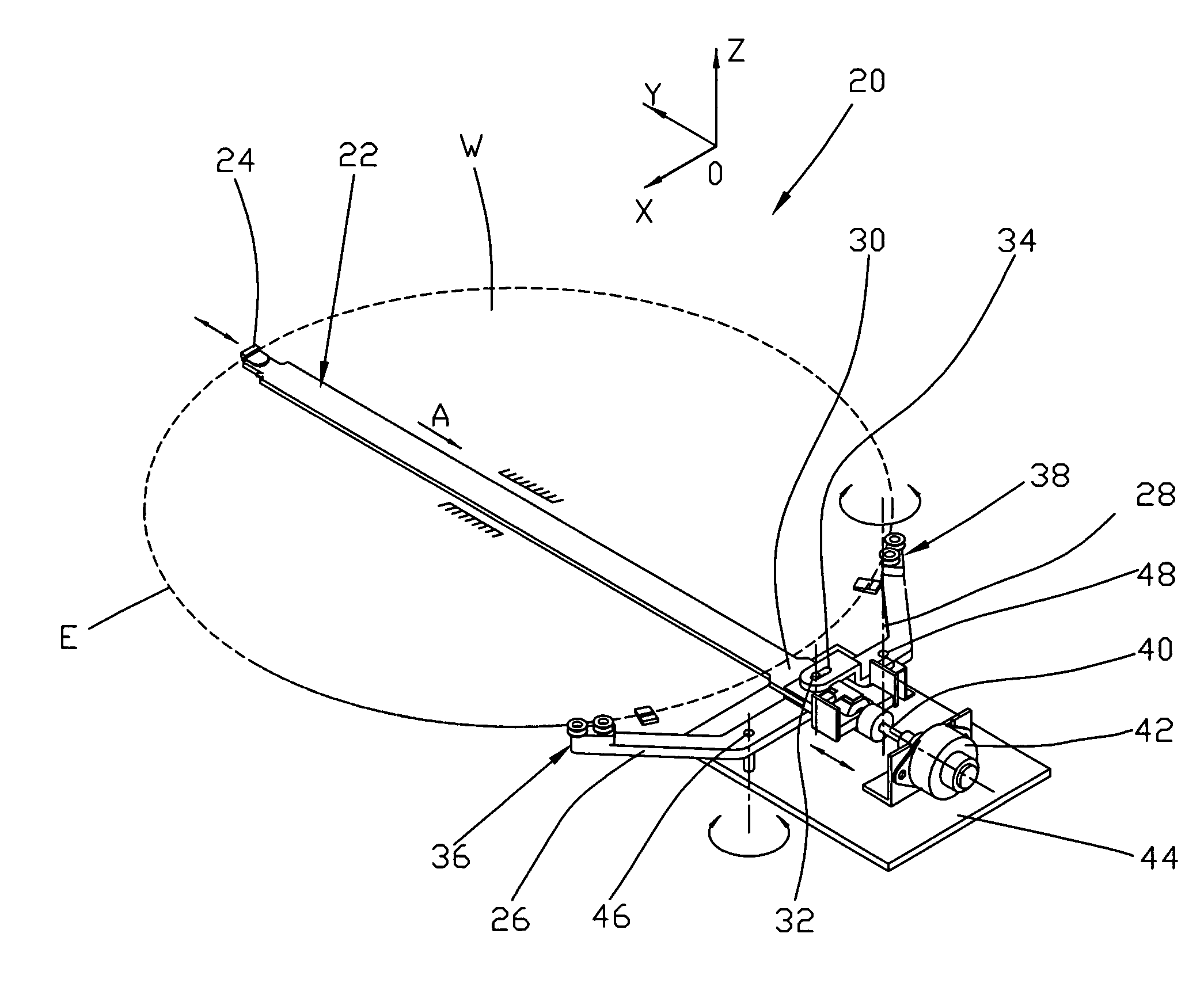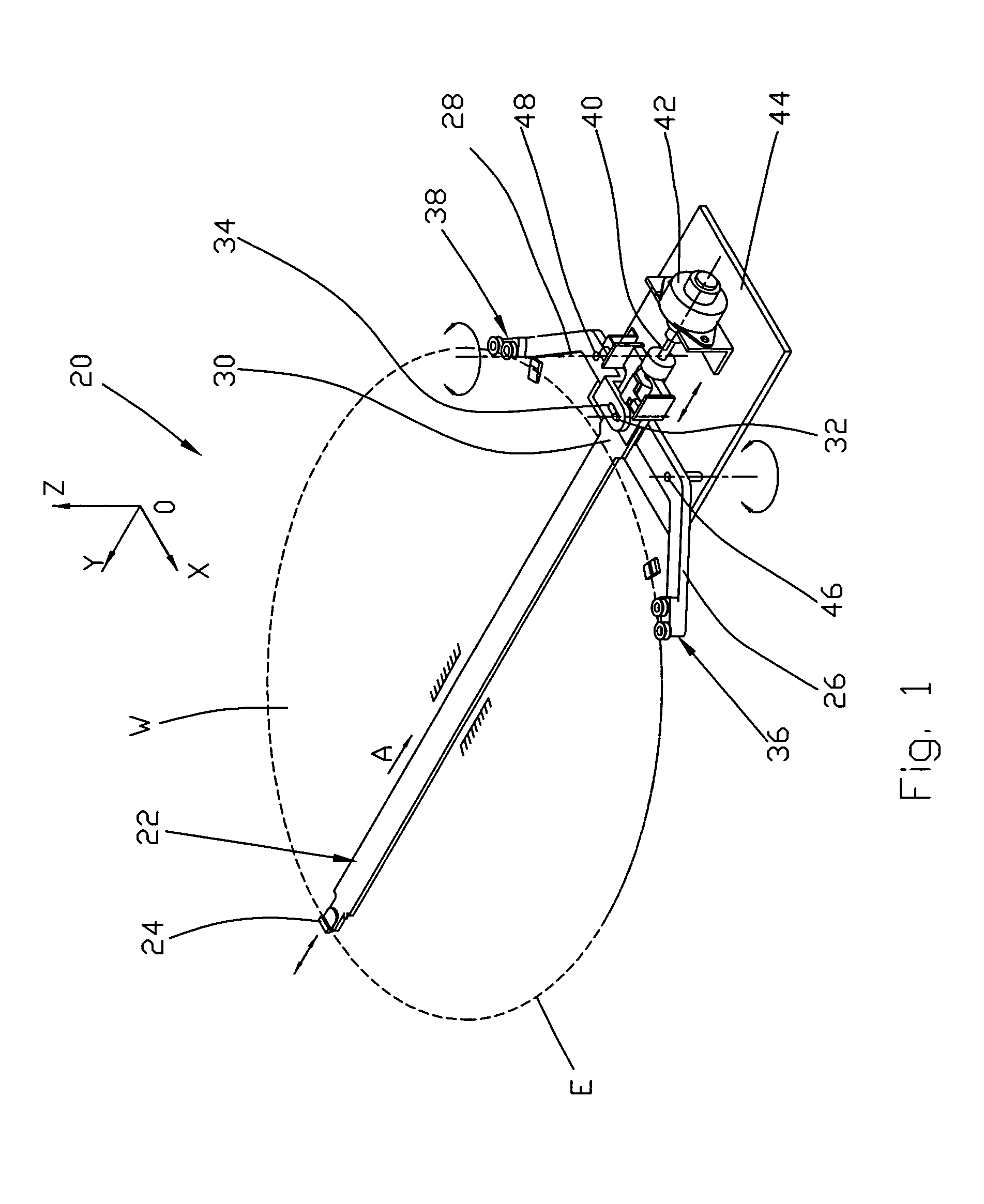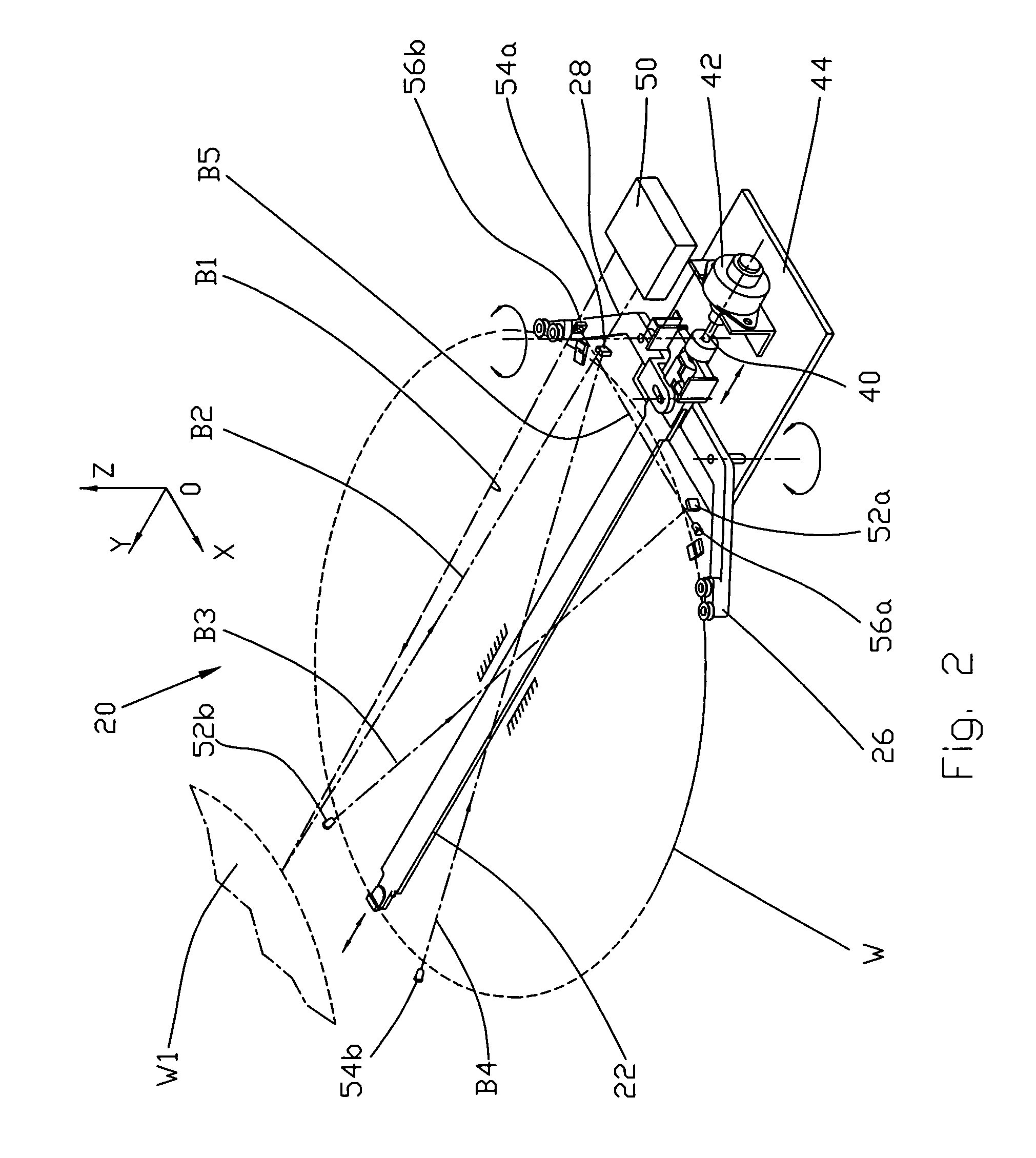Precision soft-touch gripping mechanism for flat objects
a flat object and soft touch technology, applied in the field of material handling equipment, can solve the problems of confusion, not solving the contamination problem, adding unnecessary complexity to the equipment design, etc., and achieve the effect of high reliability
- Summary
- Abstract
- Description
- Claims
- Application Information
AI Technical Summary
Benefits of technology
Problems solved by technology
Method used
Image
Examples
embodiment
of FIG. 14
[0074]Since the end effector 20F of this embodiment is similar to the end effectors of the previous embodiments, a detailed description of its operation is omitted. The device of FIG. 14 differs from the embodiments of FIGS. 5 and 13 in that when the stepper motor 42F begin to operate for initiation of the gripping motion, extreme or outer rollers of each pair, i.e., rollers 36aF and 38aF, are shifted under effect of a respective strain-gauged leaf springs 68F and 70F radially inwardly towards the center of the wafer W, the rollers 36aF and 38aF come into contact with the edge EW first, i.e., prior to contact of the rollers 36bF and 38bF with the same edge. At the moment of contact of the rollers 36aF and 38bF with the wafer edge EW the strain gauges of the springs 68F and 70F send commands to the stepper motor 42F for immediate decrease in the speed of gripping, so that further movement of the gripping posts till the moment of contact of the rollers 36bF and 38bF occurs w...
PUM
 Login to View More
Login to View More Abstract
Description
Claims
Application Information
 Login to View More
Login to View More - R&D
- Intellectual Property
- Life Sciences
- Materials
- Tech Scout
- Unparalleled Data Quality
- Higher Quality Content
- 60% Fewer Hallucinations
Browse by: Latest US Patents, China's latest patents, Technical Efficacy Thesaurus, Application Domain, Technology Topic, Popular Technical Reports.
© 2025 PatSnap. All rights reserved.Legal|Privacy policy|Modern Slavery Act Transparency Statement|Sitemap|About US| Contact US: help@patsnap.com



